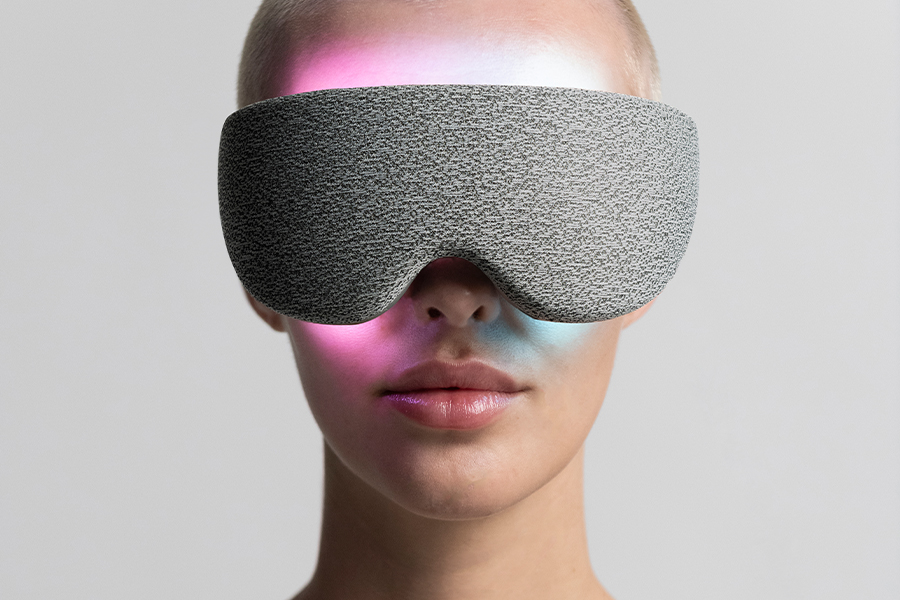Is getting what you want always a good thing?
Or are we in fact getting a bit too personal?
The move from mass production to mass customization is generally heralded as a breakthrough in the creation of a new Experience Economy, as we learned from Joe Pine in his breakdown of the Multiverse.
But in a call to action (or at least to question!) Brad Shelton, Vice President & Creative Director at BRC Imagination Arts, argues that in an industry that’s currently obsessed with ultra-personalization, sometimes our choices can lead to societal harm.
Perhaps we should be running – or at least slow-walking – in the opposite direction…
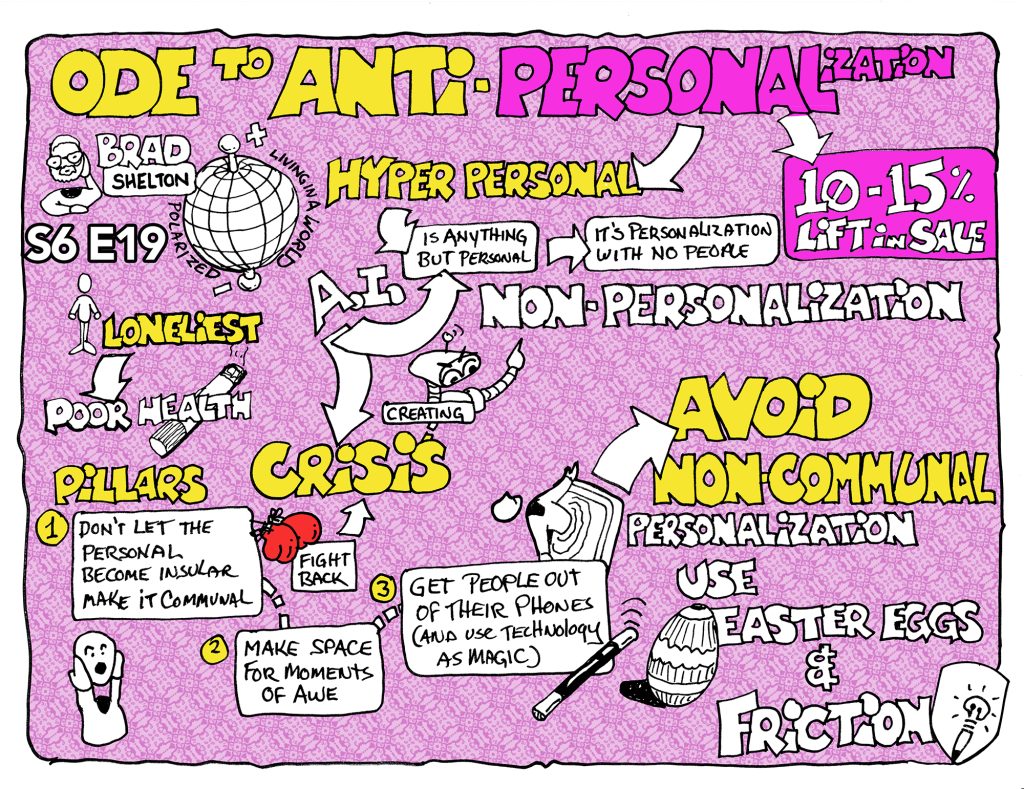
BRC Imagination Arts is a full-service strategy, design and production company that creates work for clients including Johnnie Walker Princes Street, Guinness Storehouse, the World of Coca-Cola, Jameson Distillery Bow St., the Ravinia Festival, and the Rock and Roll Hall of Fame.
In this provocative and thought-provoking Campfire, Shelton demonstrates how we can translate brand and cultural stories into transformative, human experiences for clients, without necessarily focusing on ultra-personalization. In his words, here’s why he believes that we should be getting (anti) personal…
Why Friction Is Good For Building Connection & Community

A few months ago, I was in the Netherlands and had been asked to do a talk at an architecture firm there called Kraaijvanger. At the end of the evening, I was talking to one of the partners, David Hess, and he said something that crystallized some things I’d been thinking about for a long time.
Hess said that he’d been doing a lot of thinking recently about the role he, and architecture in general, played in encouraging the stratification and polarization we’re seeing around the world. He had recently realized that by over-focusing on the ease of how people flow through spaces, he had taken away opportunities for them to acknowledge each other and their humanity.
“If everyone walks through a door in the same direction, they never have to ‘bump into’ someone at the other side and make a decision about who might walk through first.”
David Hess
If everyone is always walking the same direction, there’s no need to acknowledge the fellow humans around you.
So now, as he designs public spaces, he’s starting to pull back from “efficiency first” (not completely – buildings still have to be functional – but with Easter Egg moments that encourage human interaction). He realized that a little “friction” was good for human connection and building community, and he wanted to play whatever role he could in pulling us back from the abyss it often feels like we’re standing on the edge of.
The Art & Responsibility Of Delivering Fun
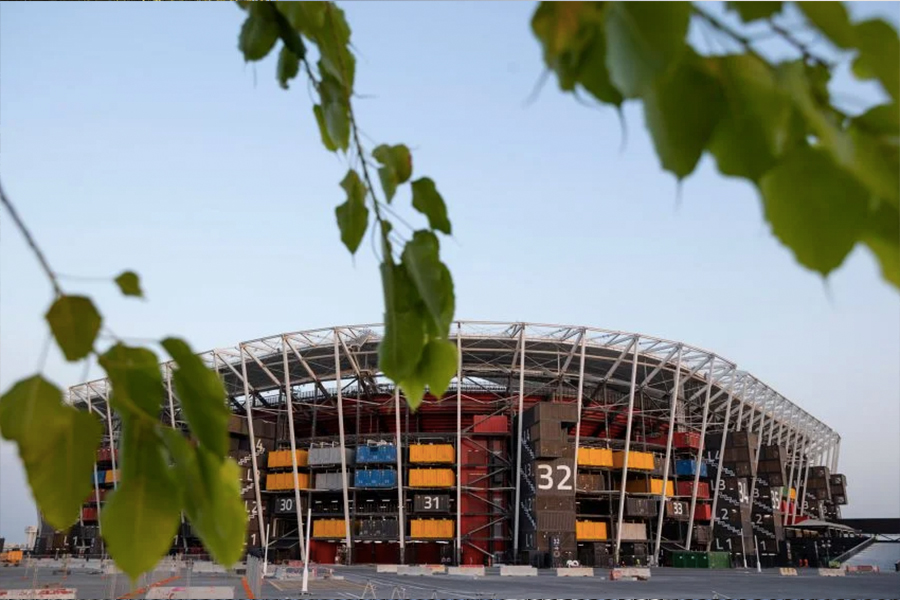
I’ve been thinking about similar issues for a while in the work that BRC does around the globe. I’d been saying for several years to whoever would listen that I believed sports and music venues – two places we’ve been lucky enough to do a ton of work – played an increasingly important role in the culture, because they were the last two places we’re willing to be emotionally vulnerable around other people in with anything other than anger. And one of the absolute privileges of the work I get to be a part of at BRC is that we try to do the same thing. We strive to create places that create connection, community, and moments of awe and transformation.
You might question their ethics, but the neuroscientists crafting the darker arts of tech think very purposefully about what they are doing to you. In contrast, you and I hopefully have the opposite goal – one of delivering joy and connection. But we too must think seriously about the art and responsibility of delivering fun.
Delivering positive shared experiences full of humor and joy is not just our mission, it is a serious calling. So please forgive me. Because what I am about to say may sound kind of egg-headed at first, heavy on the professorial social science. But these are the things we’ve been thinking about. What are the psychological engines that help us achieve that shared experience of optimism and joy?
How Personalization Leads To Loneliness – And Even Less Sex?
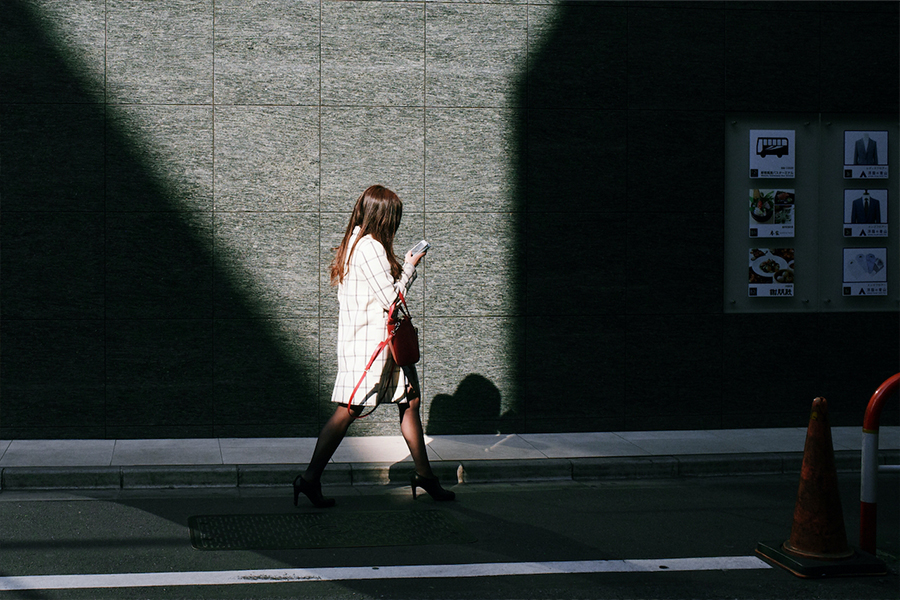
The evidence is everywhere that something frightening and unhealthy is happening. Maybe you saw the Fortune article titled “It’s not just you. Our friendships really are worse now—and it’s getting harder to make new ones.” Or maybe you’ve seen one of the hundreds of articles written recently about how we’re not talking to each other anymore.
How the personalization of algorithms has us all living in our own bubbles, and people are feeling more and more alone. How the number of men reporting that they have no close friends has gone from 8% in 1990 to 40% in 2021.
Hell, apparently we’re not even having sex anymore.
COVID appears to have made this all much worse. For those of us fortunate enough not to have lost a loved one, the major crisis it created was loneliness. Relationships were severed and never reestablished. 1 in 4 American families now have an estranged family member. Most respondents in a spring 2022 survey of American adults said they found it harder to form relationships now, and a quarter felt anxious about socializing. Only 9 percent were worried about being physically near others; the biggest source of anxiety (shared by 29 percent) was “not knowing what to say or how to interact.” Many of us have simply forgotten how to be friends.
Research has consistently shown that loneliness is linked to depression and anxiety. It has also been shown to lead to premature mortality, worsen cardiovascular health, increase inflammation, and disrupt hormones and sleep. It’s actually worse for you than being a chain-smoker. And in extreme cases, loneliness results in anti-social behavior – not just outright violence, but a general lack of participation in civil society, family, and community life.
Social media has made this exponentially worse. Your favorite social media platform makes you feel that you are exposed to thousands of people and numerous ideas. But when you look at the data, you see that users of social media rarely engage in any meaningful way with anyone who they don’t already know in the real world. And this matters, it turns out, because it’s those on the periphery of our social groups, our “weak links”, who usually introduce us to new ideas.
Personalization Isn’t One-Size-Fits-All
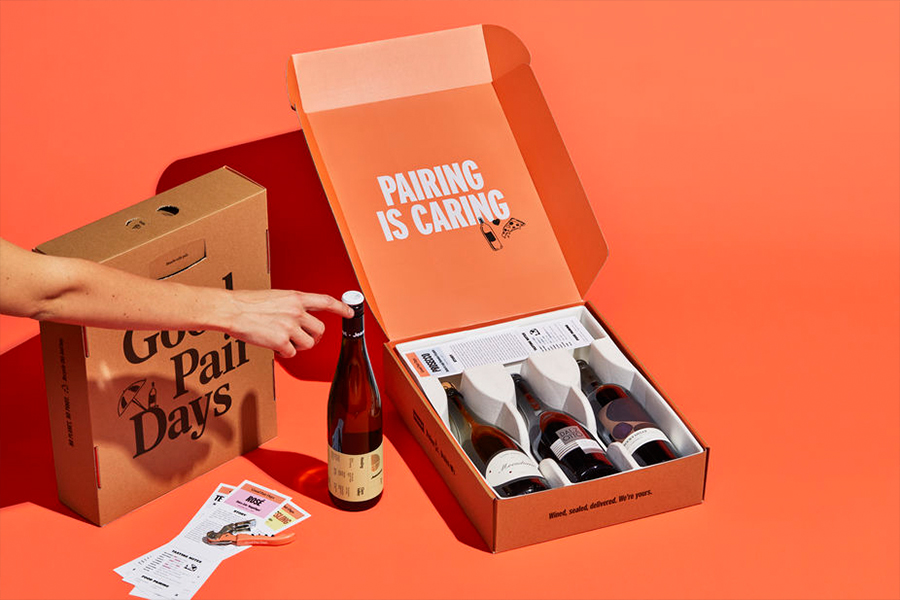
Now, before some of you just shut me down in your heads and label me a dinosaur, understand that I’m not calling for the impossible. Personalization through data is here to stay. We all want to feel special, and personalization scratches that itch. There’s no getting away from it in the world we live in – we’re surrounded by it and it’s become part of daily life in ways that we rarely notice anymore.
It’s also undeniably profitable, and money talks.
“Research shows that personalization most often drives 10 to 15 percent revenue lift.”
McKinsey
It’s also important to recognize that personalization isn’t one size fits all – that’s sort of the point. It plays many different roles, for example:
- Inviting us to choose our community (social media algorithms)
- Inviting us to upgrade / specialize / demonstrate our personality through purchase personalization (those personalized Nikes or members-only wine club)
- Offering us chances to specify purchases, get news and updates on products and events… in short, to create “community” through purchase power
But personalization has a very real opportunity to strengthen or fray the bonds of community – to unite us by celebrating and sharing our differences, or to highlight the economic, cultural, and societal differences between us.
Hyper-Personalization Is Anything But Personal
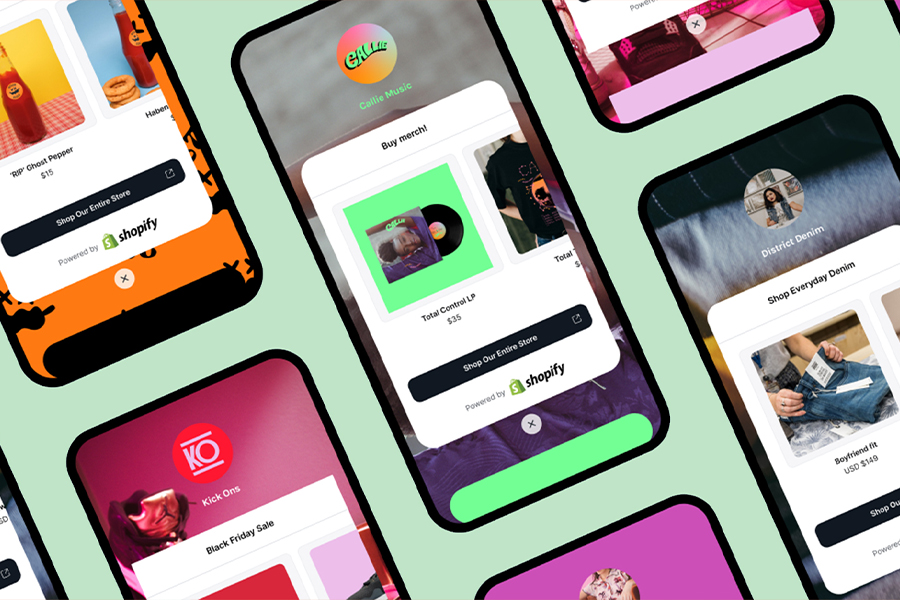
Of course, not all personalization is equal, especially not when we’re talking about what brings us together and what tears us apart.
Hyper-personalization, according to Accenture, is “the use of real-time data, AI, machine learning, geolocation, auto-generated predictive chat, predictive analytics, apps and app engagement, job roles, the customer’s perceived needs and desires, their backgrounds, and their preferences. It responds to these to generate hyper personalized suggestions, purchase opportunities, and engagements.”
But here’s the strange part, if we stop to think about it: hyper-personalization is anything BUT personal. These are AI and social media algorithms that ensure that we only see posts and opinions with which we’ll agree. It’s machine-learning generated data that guides Instagram and TikTok to sell us certain brands and experiences, and shows us people who look, feel, and act like us.
Hyper-personalization of this nature is “personalization” with no people: it’s a machine guiding human behaviors and attitudes. It’s allowing a machine to tell us which “tribes” we should belong to… and bases those recommended tribes on profit and a constructed appearance.
It promises community through purchase power. It normalizes choreographed responses rather than dialogue, and it subtly underscores the idea that communities and friendships mean “liking” and “hearting” things to show that you’re all on board with the same things.
Because of it, we inherently come to believe that our preferences are the mainstream / best / only ones out there. Hyper-personalized content leaves users slumping into isolated zones that completely detach them from the logical ability of looking at multiple sides of things.
The Difference Between Hyper-Personalization & Individualization
So, how is NON-hyper personalization different?
In this case, let’s think about personalization as individualization. Individualization is different from hyper-personalization in that an individual is working within the scope of a larger community to make choices that make him or her stand out, perform better, or evoke interactions with other people. Where hyper-personalization ensures that a conversation will never proceed beyond, “Yes, I like that, too”; individualization sparks greater conversation, positive debate, and encourages people to connect beyond a simple thumbs up or heart emoji.
You witness this all the time. When we go to a sporting event, we wear gear, but individualize our fandom. Not everyone is going to dress as Darth Vader or do full body paint at a football game, but we all recognize those characters as individual parts of a larger fandom.
So… to pull us out of this rabbit-hole… I’ll quote F. Scott Fitzgerald, who said:
“The test of a first-rate intelligence is the ability to hold two opposed ideas in mind at the same time and still retain the ability to function.”
F. Scott Fitzgerald
And scientists will tell you that the scientific method is when you discover a contradiction in your data that points you in the direction of a discovery that is itching to be made.
So there’s no doubt that we’re in a crisis. And even though much of what we all do could easily be labeled as big, dumb fun, I’m an evangelist for the idea that bringing big groups of people together to experience emotions that remind them how much they share with the people around them plays an important role in the glue that holds disparate communities together.
We Start With The Heart
So, how does that work in actuality?
For me, this requires asking a big question at the start of a project. Once we’ve settled on a theme. Once we’ve identified the change in the heart we’re trying to achieve for our guests. Once we’ve worked backwards from that and figured out the points on the journey we want our guests to experience, we have to ask:
“How do we embrace the personalization tools of today (and tomorrow), while not allowing them to pull our work away from bringing people together in shared communal experiences that build community and bridge divides?”
Well, this is a work in progress for me (as you’ll see), but I think there are three pillars we can use to support our work.
1. Don’t Let The Personal Become Insular. Make It Communal
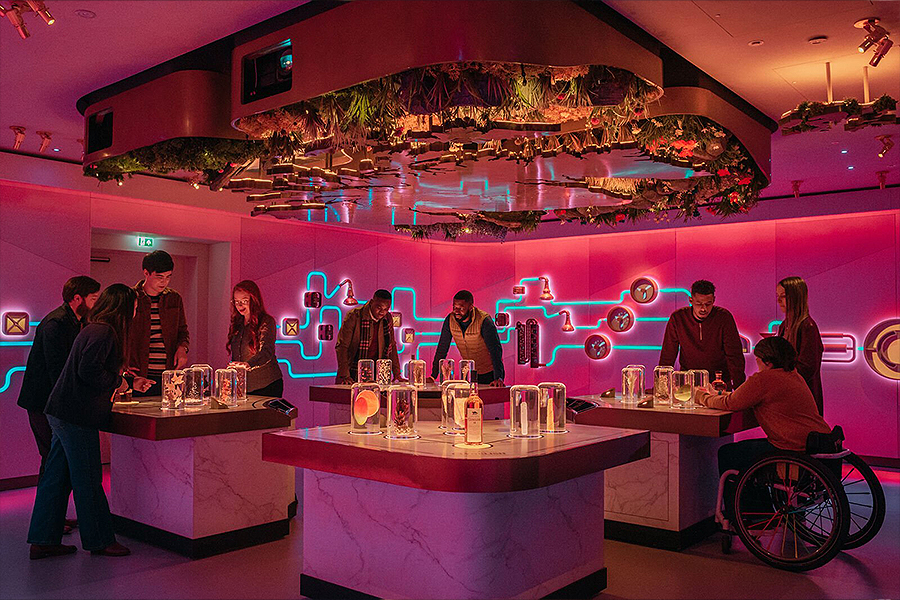
Personalization is meaningful when it reminds you of the things you have in common with the people around you. If everyone is always focused on being unique, it becomes a lot more difficult to downplay our differences and come together. Belonging to a group means you have to learn the norms and embrace the values of that group, but if you’re constantly told that the most important thing is to be distinctive – and to measure success by influencing others to be “distinctive” in the same way as you – that’s not going to help you navigate the loneliest parts of being human.
Last week, I had the great pleasure of going to the Johnnie Walker Princes Street experience in Edinburgh with my wife and two friends. It wasn’t a work trip – we were on a long-overdue vacation. And I got the rare opportunity to see one of BRC’s projects through fresh eyes.
Now, one of the first things you do when you visit JWPS is take a quiz to create your own flavor profile. There are a series of questions on an iPad, and at the end of the quiz you are given a flavor profile and a colored wristband that matches your profile.
We once had a client at a big Fortune 500 company say something I thought was pretty profound. He said “a decent brand home is one where the brand talks to the guest, a good brand home is one where the brand and the guest are in conversation, but the great brand homes are the ones that get the guests talking to each other.”
And that’s exactly what I experienced at Johnnie Walker! My friends are not whisky fans in any way – at least they weren’t before Saturday – but what they came out talking about were the new friends they had made and how everyone wanted to share their favorite cocktails with people who had been total strangers an hour ago. It was infectious. And why?
Because, although their experience had been built on elements of personalization that had made them feel special and heard, that personalization was then used to encourage generosity and community. That’s good for our client and their bottom line – there were definitely purchases made in retail – but also for the world.
2. Make Space For Moments Of Awe
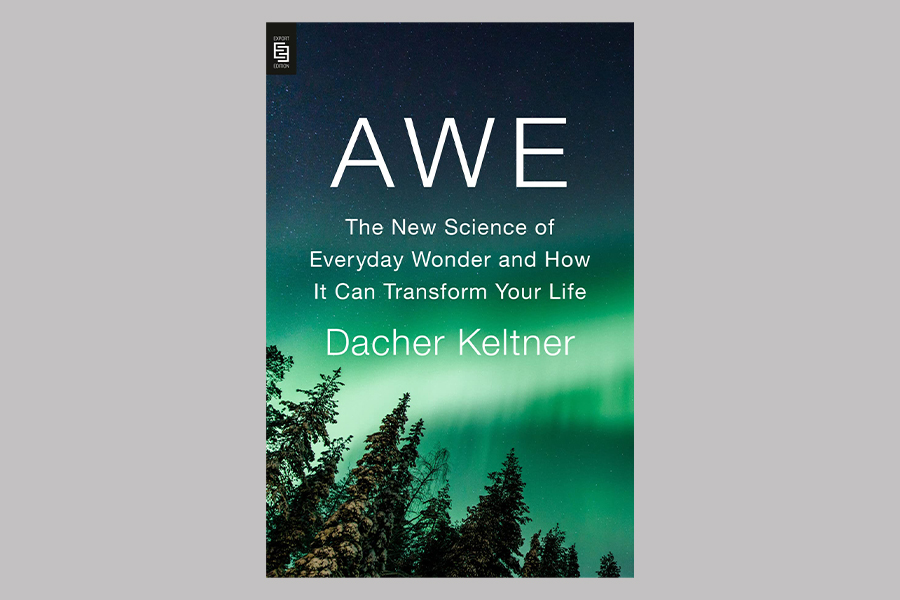
Dacher Keltner has a new book out called “Awe: The New Science of Everyday Wonder and How It Can Transform Your Life.” It reveals new research into how awe transforms our brains and bodies, alongside an examination of awe across history, culture, and within his own life during a period of grief. The book is fantastic, and it shows us how cultivating awe in our everyday life leads us to appreciate what is most humane in our human nature.
In their research, Keltner and his colleagues found evidence of Rebecca Solnit’s idea that, when open to awe, people become less focused on the self. In fact, when open to awe, people’s selfies actually increasingly include less of the self! And people open to awe reported feeling less daily distress and more of emotions like compassion and amusement.
And it turns out that engaging with what’s overwhelming can put things in perspective. Staring up at a dark sky… looking at a piece of art that makes you shudder… listening to a symphony joining into one spine-tingling melody: those experiences can make us feel connected to something boundless and beyond words.
When we’re open to awe, so, for example, when we listen to music that moves us, dopaminergic pathways – the circuitry in the brain associated with reward and pleasure – are activated, which open the mind to wonder and exploration. In this bodily state of awe, we often get the chills: signs, studies have revealed, that we are collectively engaged in making sense of the unknown.
And, according to Keltner – and it won’t surprise you that I love this – it turns out there is one source of awe that’s by far the most common: other people.
There’s an interesting conversation happening in the sports world right now that has direct applications to what we do. Sports experiences are, by their nature, communal. Technology is currently being used to personalize fans’ live experiences – we’ve probably all seen some of the VR experiments leagues like the NBA have used to put you courtside at a game – but now, finally, clubs and their stadiums and arenas are focused on developing and deploying the tech to do that in ways that make fans happy while also driving revenue for teams and operators.
But what makes them happy, it turns out, isn’t when personalization drives them towards an individual experience like VR. Instead it’s experiences that feel personalized that they can share with the people around them.
One of the areas sports is looking towards is wired and connected buildings that can respond to guests in individual ways as they arrive for events. There’s an incredible trial of an example of this at the Detroit Airport.
A company called Misapplied Sciences has rolled out a technology called “parallel reality” that allows (exclusively) Delta customers to see their specific flight info on a large overhead board as they enter a terminal. It’s pretty incredible, but here’s what I found absolutely fascinating when I saw it: the board can show up to 100 people their individual flight info at the same time as they walk up, thanks to LED technology that can be programmed with software to shoot information in dozens of directions simultaneously. The thing that absolutely made me giddy were the dozens of conversations I witnessed between total strangers, all of whom wanted to share the absolute awe and delight of having a moment that was both personal AND communal at the same time.
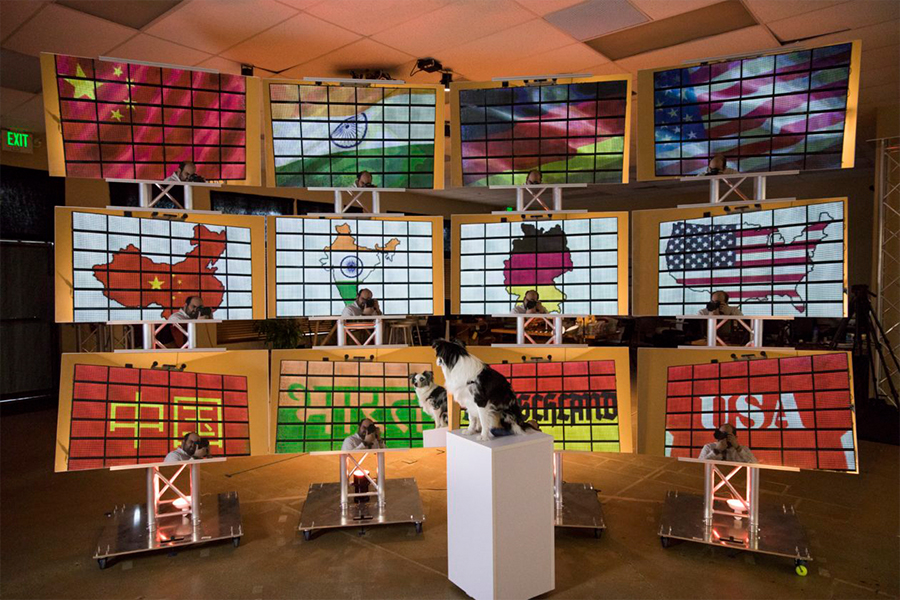
Now, at some point that will just be commonly-used technology that no one will feel the need to talk about. Remember when wifi in a plane was some kind of miracle? And the great thing about creating moments of awe is that they don’t have to be built around technology at all.
My favorite example of this is a food-based experience called Outstanding In the Field. They were started by an artist named Jim Denevan, who is known globally for creating large-scale temporary land art (which, if you haven’t seen it, creates awe in a way that few things do).
Their goal is to “transform lives through food.” And boy do they succeed. Each season is built around a theme. Last year’s theme, for obvious reasons, was “Lighthearted.”
This is from his letter last year. I want to read it in full because I think there’s a lot here we could all learn from:
“Lighthearted. A word and a quality that the world could use a bit more of — especially now. It’s been dark clouds and dark days for the past few years and we’ve all had to face our fears. The strength to persevere comes in adverse and tough times, but strength also comes from embracing whimsy, lightheartedness, and play.
Gathering at the table heals and nourishes. Slows everything down. Right down to the speed of thinking. Conversation at the table evolves naturally — each person contributing organically (to use the word) to a destination that is not pre-determined. To get to the place of surprise and whimsy, we seek it out and give it room to happen.
This season we will put the table in the slowly rising tide and watch the wooden chairs nearly float away. But we will consult the tide tables. We will set our table in an awkward spot because the view is so good, but with the use of table and chair shims to keep us all steady. We will work to create an environment that surprises our chefs, our guests and ourselves. We are going to do things in a way that foregrounds whimsy and guarantees those gathered might experience occasional disbelief and skepticism.
In our art of table making we often add a bit of hill climbing for dubious reward. Does the table really need to be so far from the reception? If it adds to a feeling of wonder, it sure does. We are not here to make it look easy. Easy is a trip to a restaurant. We are out for adventure.
Life is hard enough but sometimes it’s ok to make it even harder. In our devoted service to possibility and seeming impossibility, we bring our lightheartedness and whimsy.
Life is not easy. We would not have it any other way.”
Jim Denevan, Outstanding In The Field
Man, I love that…
So what is it? The idea is so simple. Rather than source ingredients for a restaurant from farms, they bring the table to the farm. They bring the restaurant to the source. Literally. It’s a culinary caravan with tables set in vineyards, beaches, meadows, fishing docks, and city streets in addition to a long list of organic and sustainable farms.
It’s a roving restaurant without walls that is rebuilt every morning and disappears every night. It is a momentary experience and a joyful celebration of human connection. And it’s built around an incredibly simple idea (though its logistics are far from simple): at a moment when it feels like everything is trying to tear us apart, together we gather at one long table in an unexpected and sometimes difficult to get to setting to share the most fundamental and universal human conversation: a meal.
Trying to describe a meal with Outstanding in the Field is like trying to describe a magic trick. They create lifelong memories, they create celebrations of community, and they create moments of awe… and I believe all of that builds empathy and trust at a time when both of those things are sorely lacking.
3. Get People Out Of Their Phones (And Use Technology As Magic)

Something you won’t see BRC do, at least not until the technology has transformed to such an extent that it’s unrecognizable from its current iterations, is put head-mounted devices onto guests. Why?
Well, the technology may be cool, but a group of 4 that walks in a room and puts on VR or even AR headsets quickly becomes 4 groups of 1. It’s the opposite of community. Any time technology – even when it’s the “coolest” or the “newest” – is pulling us away from community and solely into ourselves and our experiences, it’s probably better saved for home.
Tyler Brûlé is the Editor of Monocle magazine. When he first founded the magazine, his entire industry was going digital. But when they went left, he went right, creating beautiful analogue magazines, in-person retail, and an attempt at actual human-interaction relationships with his subscribers.
He recently wrote something that really stuck with me. He said:
“Meeting new people shouldn’t be a chore, a task to tick off… but if we want to have better conversations, we have to be open to closing our phones, stepping out of our comfort zones and making an effort to talk to those at the edges of our usual set.”
Tyler Brûlé
Just a few years ago, there was a giant push in our industry to use the phone as a tool in our experiences. AI overlays, quizzes, “points” that could be accumulated by scanning QR codes… in the name of personalization, we were keeping people’s heads down, shoulders hunched over, attention pulled away from the people they were with.
I’m sure the data was useful (and profitable) for many, but is there anyone alive that thinks back to those experiences and thinks “I’m so thankful I did that” or “that was transformative, and additive to my life?”
Several years ago, Casa Batlo in Barcelona – literally one of the great architectural marvels of the last half millennium – was giving everyone small iPads so they could have a “personal experience with the building.” You’d point the screen towards each room and see the room “come to life.”
I remember walking around dumbfounded as I watched people go from room to room and floor to floor in this astounding physical manifestation of creativity and not talk to each other as they stared at a screen with headphones on. I mean, just because a technology exists doesn’t mean you have to use it. Who thought this was a good idea?
If I can leave you with one thing, it’s this: it’s our responsibility to create moments that do the exact opposite of that. If it’s something guests can do on their phone at home, why on earth would we want to replicate that in our projects?
Imagine if Casa Batlo had thought of technology differently, using it to create communal moments in those incredible rooms that got people talking to each other instead of staring at a screen?
Are The Experiences We Create Bringing People Closer Together?
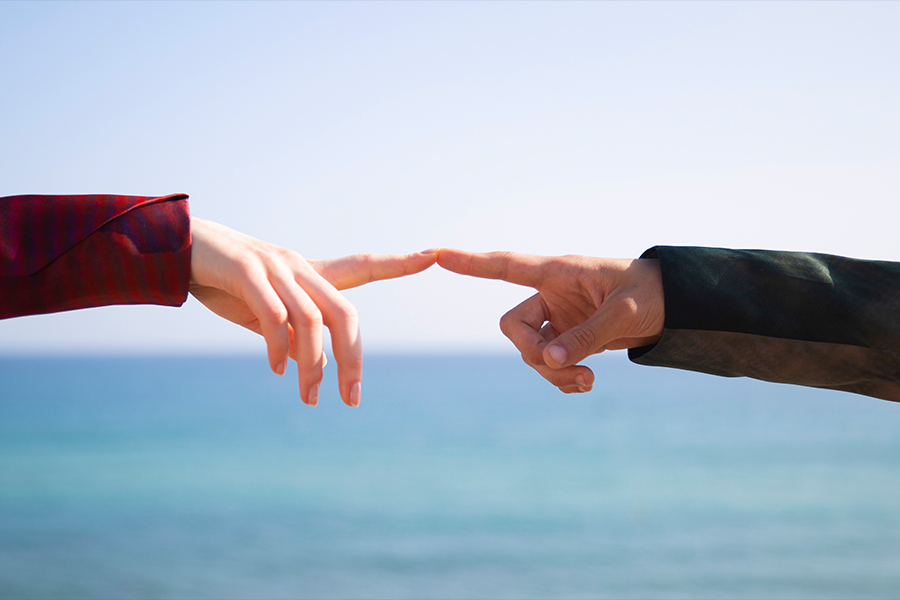
Okay… I’m headed back into “you kids get off my lawn” territory. So let me finish up with this: this was not intended as a screed against personalization. Personalization can be a useful tool in building the bonds of community.
But hyper-personalization – things that make the experiences we create solely focused on the individual journey in lieu of the collective or community – are not just bad for the world, but also bad for our clients. When an experience pulls you from the communal without focusing on the things that tie us all together, it quickly becomes just another path to loneliness. And who wants to be associated with that?
So I’ll finish with a challenge for you and for all of us in this industry.
- Are the experiences we create bringing people together? Or isolating them?
- Are we creating experiences people love sharing? Or are we creating experiences that draw people into ever smaller bubbles of isolation?
- Are we creating experiences that engage people in a celebration of our shared humanity? Or are we creating experiences that divide us into tribes and pit our tribe against those who are “the others”?
The tech industry employs an army of psychologists, neuroscientists and others to make their products addictive and insulating. And, although we may sometimes use their tools, we in this industry have an opportunity – and I would argue a responsibility – to do the opposite. To bring people together in ways that draw people out of their bubbles and into shared experiences that are transformative, communal, and remind them of the wonders of being alive.
Designing For Discomfort, Friction & Closeness
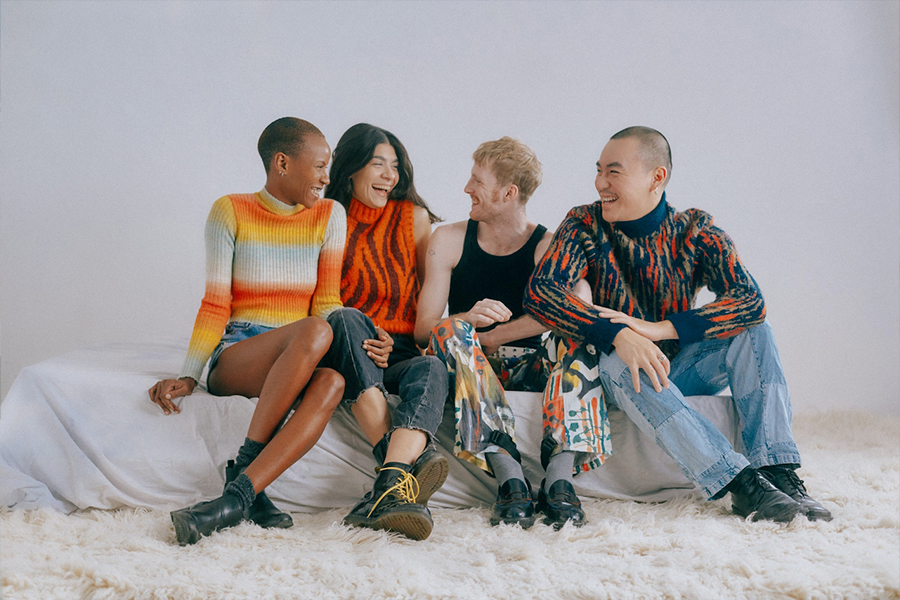
Inspired by Shelton’s closing challenge, we tasked the experience experts present with thinking of ways that they might – or are already – creating experiences that bring people closer together, rather than driving them further apart. How might we use friction, Easter Eggs, and technology to get people talking to each other, and to strangers?
“We struggle all the time getting clients to understand that in order to get moments of awe, first you have to have moments where all is lost. Sometimes it’s just using something humorous that builds community – we often start a project by making it seem really dull and boring, and then people become a community as when you turn it into something magical. They go on a journey from terrible to amazing, and bond as a group.”
Brad Shelton
One way in which we might do this is by purposefully designing for discomfort – what Pigalle Tavakkoli calls “frictionful” rather than “frictionless” experiences. These enable participants to get out of their comfort zones and are particularly brilliant for learning about themselves or the world around them. (For more on the topic, see The Neuroscience Of Flow & How To Design For Struggle.)
“In the intercultural learning experiences I design, friction is getting strangers to meet, figure out differences and similarities, and connect.”
Bernd Gibson
Immersive learning experience company Chronyko has previously staged a kidnapping during a really boring lecture to help bond a community. If we look at escape rooms, they also hang on getting a group to come together to solve problems that they wouldn’t be able to solve on their own. And in experiences with multiple, non-linear pathways, such as a Punchdrunk production, it’s impossible for any one person to experience the whole narrative; they require a post-experience discussion to fully understand, or are co-authored.
“I recently had an experience like this at Sleep No More – I got taken up to the sixth floor. Someone heard, and I was surrounded by 50 fans who wanted to know what I’d done in order to get up there.”
Brad Shelton
We could also use existing friction points in experiences – for example when people check in to an experience – and make it a point for inviting connection.
“We could create dead-end ‘waiting spaces’ where people can connect while waiting for the next thing to happen. Mazes feel like a great example of this working very effectively.”
Ricky Thomas
This also makes us think of the importance of good queue design – something that Secret Cinema does so well and which they take a lot of time to plan, to make queuing an experience in itself.
Perhaps we could even lean into the awkwardness or discomfort of certain physical spaces or situations to make people more aware of how they occupy space or normally move through the world. Cesar Moheno-Pla suggested a bench that you can’t sit comfortably on, reminiscent of Jeppe Hein’s benches at London’s South Bank. Arthur Zards also recalled a dinner in the Alpine forest where the windows of the bus on the way there were blacked out in order to mess with people’s perceptions.
We could also provide prompts, props and ask questions that bring people together.
“I like having eye-catching things that guests can see another person holding and ask ‘where did you get that?’, such as a creative-looking cocktail, swag, etc. It not only prompts conversations and collaboration, but turns attendees into guides of the experience.”
Melanie Goodwin
Audette Sophia has “Social Playing Cards” specifically designed to get people to talk to one another.
“They act as a social permission slip – you feel emboldened to approach someone. I also did a mini game-show experience where participants spun a wheel with a social interaction challenge on it. If they did it, they got to spin a rewards wheel with a pleasant experience to reward them for their social bravery.”
Audette Sophia
We can go even deeper with these questions. Albert Boswijk starts his workshops with the question “what changed your life that you will never forget?”, before challenging people to share their answer with someone they don’t know.
“I find that surprise, an element of the unexpected, always pulls people outside of their head and into conversation. It’s a form of awe, I suppose. Witnessing something profoundly sad together can do the same thing.”
Nina Poulos Ramage
As Jane Nielsen says, good reflection questions in a gallery, exhibition space or other space where you want visitors to share or co-create, are “vulnerable questions”: those relating to emotional states that feel a little dangerous to share, but also make you realise you’re not alone.
“Bringing the individual back to themselves does not have to be the opposite of at the same time engendering a felt connection with other humans and the non-human nature. In fact, it has never been separate.”
Markus Stefan
The WXO Take-Out
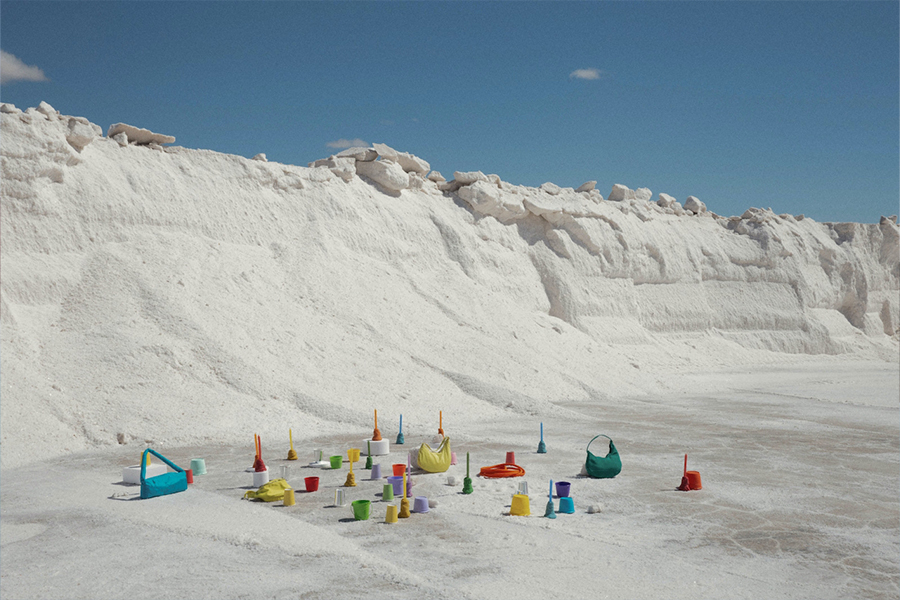
Personalization isn’t necessarily a bad thing – it’s profitable, and it’s here to stay. However, when we put hyper-personalization above individualization, we risk driving people further into the bubbles of isolation being fuelled by algorithmic tech and social media.
There’s an opportunity – and perhaps a duty – for us as experience creators to design for positive change, human connection, and community, rather than fragmentation, competition and isolation.
So next time you’re designing an experience and thinking about personalization, ask yourself:
- Do we have an ethical responsibility to raise and talk through the societal implications of our project choices with a client?
- Do guests go to experiences to feel like the hero of their story or to connect with others and feel like they’re part of something bigger than themselves?
- How can personalization be used to create community as well as acknowledge each of us as individuals?
To see the full line-up for the WXO Campfires Season 6, click here.
To apply to join the WXO and attend future Campfires, click here.

